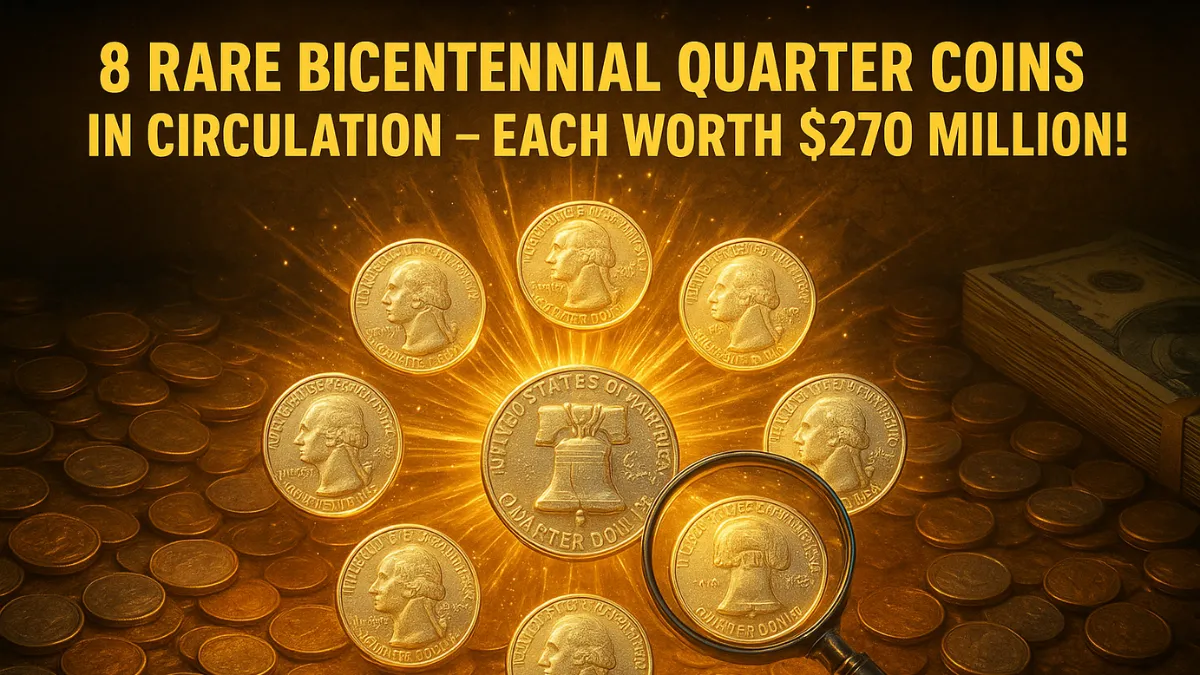With headlines swirling about Bicentennial quarters potentially worth $270 million, coin collectors and casual change checkers alike are examining their pockets with new excitement. But what’s fact and what’s fiction? Are there really eight rare Bicentennial quarters circulating that could transform your financial future overnight? Here’s a clear, comprehensive look at the myths and realities behind these special 1976 coins, what actually makes some of them valuable, and how you can spot a potentially rare find.
The Bicentennial Quarter: Historical Significance and Mintage
The U.S. Mint released the Bicentennial quarter in 1976 to celebrate America’s 200th birthday. Adorned with a colonial drummer on the reverse and dual dates (1776–1976) on the obverse, these quarters were produced in tremendous numbers—over 1.7 billion entered circulation, plus special silver versions for collectors.
Fact-Checking the “$270 Million Quarter” Claims
Recent viral stories claim there are rare Bicentennial quarters worth up to $270 million each. However, according to respected numismatic experts, these wild values are entirely unverified and extremely unlikely. In reality, no publicly documented sale or auction has approached such a stratospheric price tag for a Bicentennial quarter.
What Actually Makes a Bicentennial Quarter Valuable?
While $270 million is fiction, it’s true that select Bicentennial quarters can fetch considerably more than face value. Several rare characteristics and production errors can make these coins especially sought-after by collectors:
- Minting Errors: Coins with dramatic mistakes—like double die errors or off-center strikes—are rare and can be worth hundreds or thousands of dollars depending on severity and preservation.
- Silver Proof Varieties: Some Bicentennial quarters were struck in 40% silver for collector sets. These can be worth $15–$200+ in pristine condition, especially for top-graded pieces.
- High-Grade Uncirculated Coins: Standard copper-nickel quarters kept in perfect, uncirculated condition and rated MS67 or above may bring $100–$4,500, with silver versions (MS69) reaching up to $19,200 at auction.
- Major Collector Demand: Incredible grade rarity and prominent features—such as a missing mint mark or a dramatic manufacturing anomaly—can drive values higher, though not remotely to $270 million.
Examples of Genuine Valuable Bicentennial Quarters
How to Spot a Potentially Rare Bicentennial Quarter
- Examine for Minting Errors: Look for doubled elements, off-center strikes, or missing mint marks.
- Check Mint Mark and Material: “S” mint marks indicate San Francisco special issues; silver versions are heavier and have a distinct edge.
- Assess Condition: Coins with no wear, scratches, or handling may be highly sought after, especially when professionally graded.
- Verify Unusual Features: If your coin looks unique, have it appraised by a professional numismatist or third-party grading service.
Takeaway: Excitement and Realistic Expectations
Despite viral rumors, there are no confirmed Bicentennial quarters in circulation valued anywhere near $270 million. However, the thrill of discovering a rare, high-grade, or error Bicentennial quarter—sometimes worth thousands—is real. Checking your change is still worthwhile: you might not become an instant multi-millionaire, but you could uncover a rare piece of Americana that excites collectors and boosts your collection or wallet.
